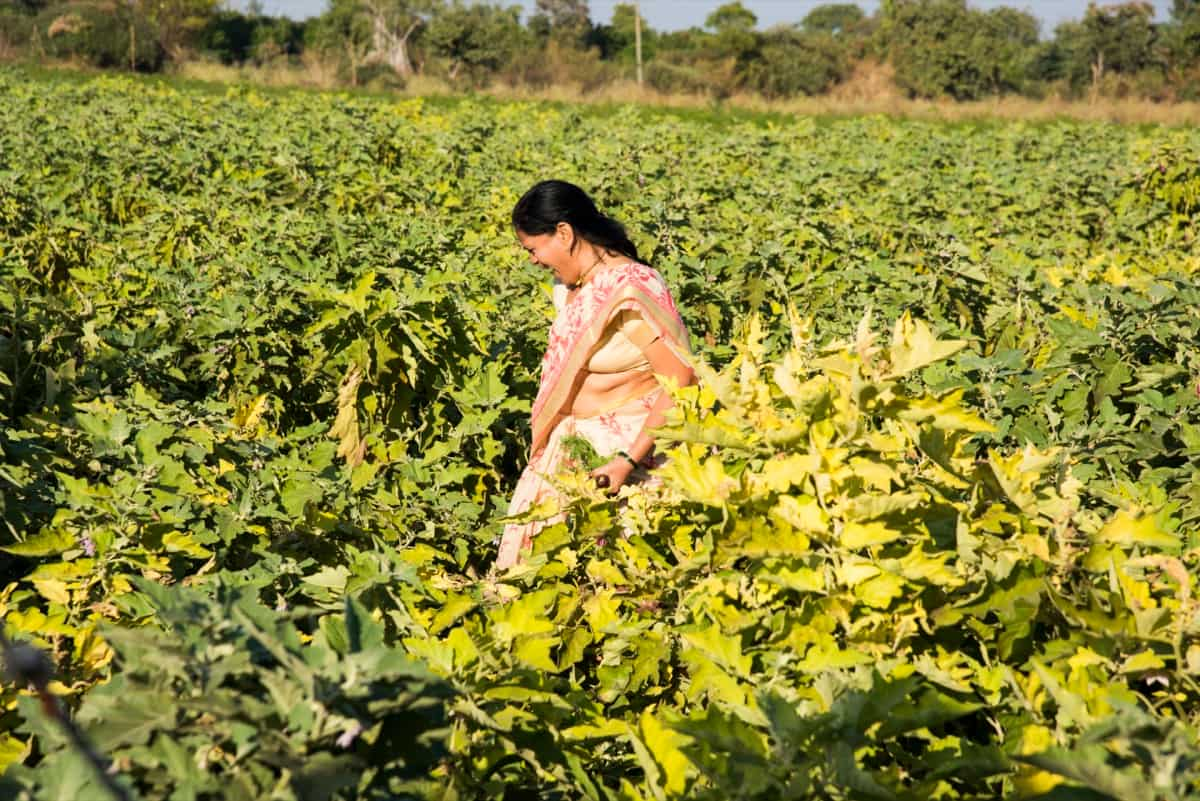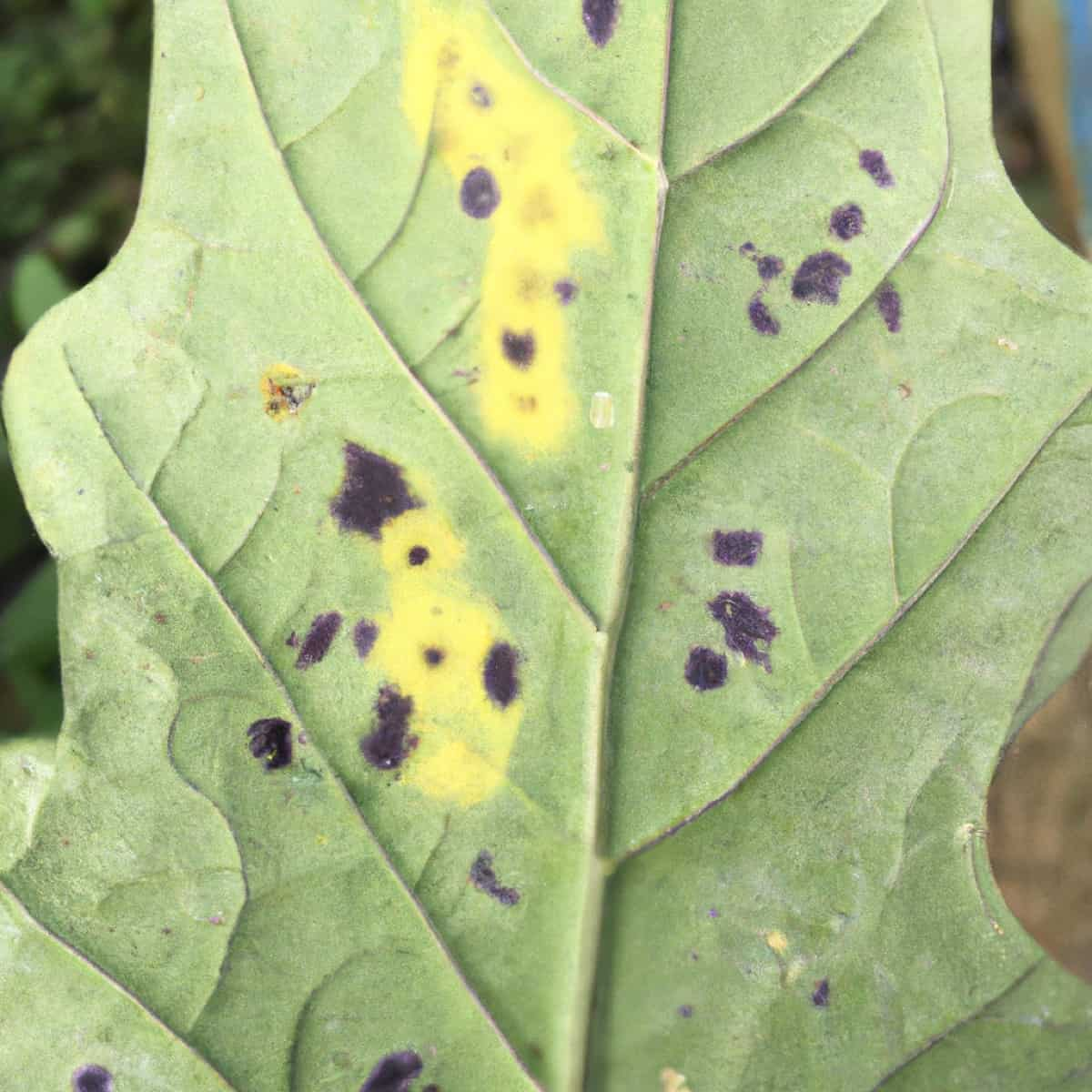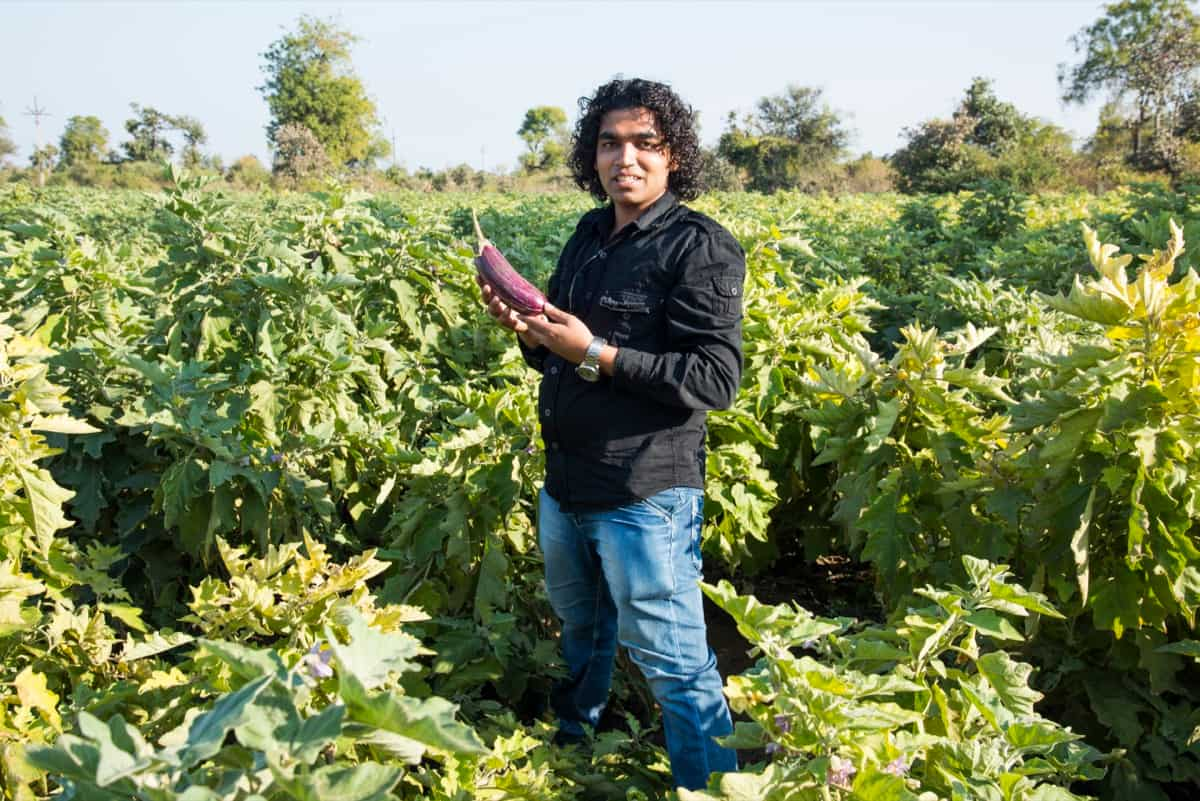Cercospora Leaf Spot is a common fungal disease that affects eggplants(Brinjal), also known as aubergines. The disease is caused by the fungus Cercospora melongenae. It is characterized by the appearance of small, circular spots on the plant leaves, which then enlarge and become irregularly shaped. These spots are usually surrounded by a yellow halo and can appear on the leaf’s upper and lower surfaces.

If left untreated, the spots may merge, leading to leaf curling and defoliation. Although Cercospora Leaf Spot does not infect the fruit directly, it can lead to reduced yields due to lower productivity of the plants. The fungus can live in plant debris and soil for up to a year, making it a persistent problem in areas where the disease is prevalent.
Cercospora Leaf Spot Management in Eggplant
The causal organism of Cercospora Leaf Spot Disease
- The causal organism of Cercospora Leaf Spot Disease is a plant-pathogenic fungus called Cercospora melongenae.
- This fungus can survive in plant debris and soil for at least one year and is commonly spread by wind and water, including rain and irrigation.
- Infected tools and persons can also disperse it. The fungus typically infects the lower, older leaves of plants and moves up the stem to younger foliage.
The Disease cycle of Cercospora Leaf Spot Disease
- Under moderate to warm temperatures (between 78 to 90ºF) and in the presence of free moisture, the conidia germinate and infect the plant tissue. Once the fungus infects the plant, it begins to grow and reproduce, causing the characteristic symptoms of the disease.
- During warm and wet weather, new cycles of infection and sporulation can occur every seven to 10 days. The infected plant tissues produce new conidia that are spread to nearby healthy tissues or other plants by wind or splashing water, continuing the disease cycle.
Causes/Conditions favorable for Cercospora Leaf Spot Disease spread in the field.
- Heavy soils and low-lying areas that retain soil moisture for long periods can create conditions that favor the growth of the fungus.
- Air-borne spores (conidia) disseminated by wind, rain splashes, tools, implements, and field workers, can easily spread the fungus from infected to healthy plants.
- Free water on the plant surface is required for the conidia to germinate and infect the plant tissue.
- Favorable temperatures between 26-32°C promote the rapid development of the disease, with new infections occurring every 7-10 days.
- High relative humidity and continuous plant wetness create a conducive environment for the growth and spread of the fungus.
In case you missed it: Damping Off Management in Eggplant: Symptoms, Treatment, Chemical, Biological, Natural, and Organic Control

Symptoms of Cercospora Leaf Spot Disease
- Small, round, and slightly sunken spots on the upper side of the older, lower leaves.
- As the infection progresses, the spots become larger, more irregular, and visible on both leaf surfaces.
- The color of the spots changes with time, depending on their location on the leaf. They may range from brown to steel-gray on the upper side and light brown on the lower side.
- In severe cases, the leaves may curl and drop off.
- The disease can lead to reduced fruit growth and lower productivity of the plants.
Cercospora Leaf Spot Management in Eggplant by Cultural Method
- Cultural management practices can be used to manage Cercospora leaf spot disease in eggplant. One effective method is to grow resistant varieties such as the Pant Samrat, which are resistant to both leaf spots.
- Eliminating crop debris and cucurbit weed hosts is essential for Cercospora leaf spot management. This can be achieved by removing crop debris and weeds from the field and adjacent areas to reduce the inoculum source.
- Crop rotation is also an effective cultural practice for managing Cercospora leaf spot disease. A two- to three-year rotation to non-hosts can help reduce the build-up of the pathogen in the soil.
- In addition, proper irrigation practices should be observed to avoid prolonged leaf wetness and high relative humidity, which favor disease development.
- Fertilizer management and soil drainage can also help reduce the incidence and severity of the disease.
Cercospora Leaf Spot Management in Eggplant by Biological Method
- One approach is to use biological agents, such as Bacillus subtilis strain QST 713, as a bio-fungicide.
- Applying foliar spray to help control the infection by competing with Cercospora melongenae.
Cercospora Leaf Spot Management in Eggplant by Chemical Method
- Chemical management is an effective method for controlling Cercospora leaf spot disease in eggplant. Some fungicides commonly used to manage the disease include Bordeaux mixture, copper oxychloride, and zineb.
- A regular fungicide spray program of copper-based fungicides and chlorothalonil can help reduce the incidence and severity of the disease, especially when crops are susceptible and conditions are favorable for disease development.
- Products containing chlorothalonil, mancozeb, or octanoic acid in combination with copper salt can be used as foliar spray and soil applications.
- The fungicide spray should be started early in the season and repeated at regular intervals to prevent the disease from establishing itself.
Cercospora Leaf Spot Management in Eggplant by Organic/Natural Method
Azadirachta indica (neem oil) may also effectively control the disease. These natural options can be used with cultural practices to provide a more sustainable approach to disease management.
Preventive Measures for Control of Rice Blast Disease
- Plant-resilient, tolerant, or resistant varieties are recommended for the specific area.
- Use healthy or certified pathogen-free seed and plant material.
- Maintain increased space between plants to ensure good ventilation and prevent the disease from spreading.
- Avoid excessive weed growth, as it can provide a host for the disease.
- Ensure sufficient fertilization to help the plants grow and resist the disease.
- Avoid over-irrigation to reduce humidity, as the disease thrives in moist conditions, and do not use overhead sprinklers.
- Water in the morning rather than in an evening to allow the plants to dry off during the day.
- Avoid working when plants are wet, as this can spread the spores of the disease.
- Remove or destroy infected plants and waste by burning or plowing them, as this can reduce the amount of inoculum present in the field.
In case you missed it: Verticillium Wilt Management in Eggplant (Brinjal): Symptoms, Treatment, Chemical, and Biological Control

Conclusion
Cercospora Leaf Spot Disease is a major fungal disease affecting eggplant production worldwide. It causes significant yield losses if not properly managed. Control measures, including resistant varieties, cultural practices, chemical and organic methods, and proper sanitation, can help minimize the disease incidence and severity.
- Beneficial Insects in Pest Management
- Natural Solutions for Pest Control in Flower Gardens
- Types of Fungicides Used in Agriculture
- Common Issues in the Fruit Development Stage of Pomegranate Farming
- Fruit Development Issues in Papaya: Easy Solutions and Treatment
- Soil-Borne Diseases and How to Protect Your Plants
- Practices to Prevent Disease Spread in the Garden
- From Wilted to Thriving: How to Treat Root Rot Naturally in Houseplants
- Natural Remedies to Cure Brown Spots on Fig Tree Leaves